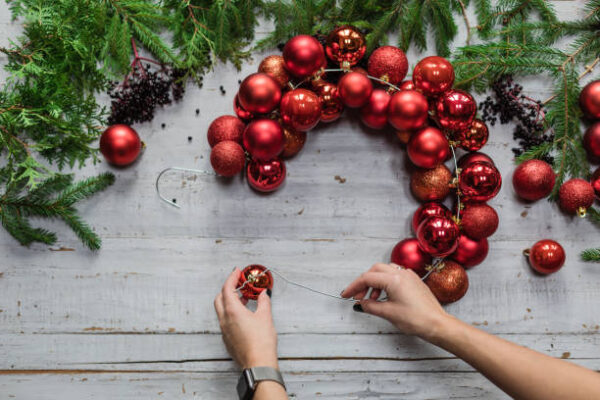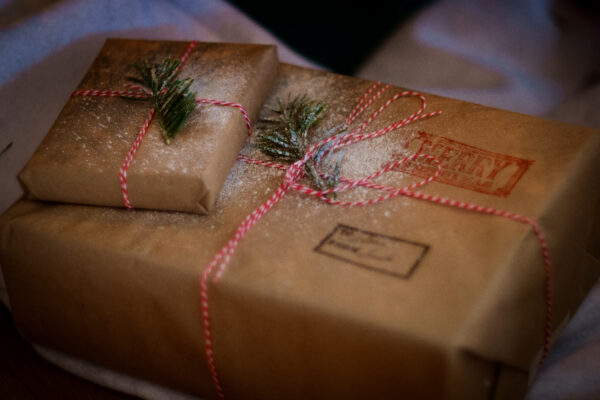Embracing an Environmentally Friendly Christmas
By Brian Bowe
As a wise man in mutton chops once sang, it’s Chriiiiiistmaaaaasss!
But surely you knew that already, what with the abundance of tinsel and fairy lights decorating Dublin city streets and shops since late October. Snowmen and gingerbread men – miniature, inflatable, edible – have since infiltrated our daily lives like Body Snatchers after a year of laying low.
In the blink of an eye it’ll be St Stephen’s Day, you’ll be wading through seas of unwanted gifts in order to stuff an overflowing bin with discarded wrapping paper, half-eaten food and that promise you made yourself last year – that this Christmas you’ll try to restrain yourself, just a bit.

According to Red C Research & Marketing, Irish consumers are set to spend an average of €582 on presents this festive season. Last year, on Christmas Eve, shoppers spent €100 million in total. And get this, that same year, a total of €1.3 billion was spent during the four week lead-up to Christmas on grocery items alone – that’s a lot of brussels sprouts! These numbers show that despite retail taking a hit during the Covid years, Irish shoppers are eager to spend big!
However, with the country’s current cost-of-living crisis, sustainable shopping is on a lot of people’s minds this year. We could all do with scaling down our consumption and being more environmentally conscious this festive season. Of course, It’s not only good for the planet, but your wallet will appreciate it too.
“Oh Christmas Tree, Oh Christmas Tree.”
The focal point for parties and presents, decked out with ornaments and lights, stands the almighty Christmas tree. For some, the aroma of a genuine tree and the time-honoured tradition of hauling one into the house holds great significance, while others prefer the clean and convenient alternative of an artificial one. But which is better for the environment?
A real tree grown and sold locally is the best option for Christmas due to lower carbon emissions during production and transportation. Choosing a real tree supports forest preservation. If you opt for a potted real tree, ensure you give it proper care and eventually replant it. Alternatively, if you choose a traditional cut tree, but be sure to recycle it afterwards.
Deck the Halls . . .
The majority of Christmas decorations are problematic for the environment because these trinkets, like tinsel, baubles and glitter, are pretty much impossible to recycle, not to mention the huge amount of packaging waste. Interestingly, the traditional Irish Christmas involved purchasing very few commercially produced decorations; that trend kicked off around the late 19th century.
Super simple DIY decorations, like dried out orange slices (to be hung from the tree or scattered artfully across your Christmas dinner table), are not only an eco-friendly way to decorate the house, but are very fragrant and add a nice citrusy smell. Similarly, popcorn garlands are the perfect tinsel substitute. The tradition dates back to the Victorian era and is simple to make. All you need is a needle, thread and a big batch of popcorn. Switch out popcorn with fresh cranberries for added colour. If DIY isn’t your thing, visit a local Christmas market or craft fair and pick up some handmade options for your home.

(Credit: Getty Images/iStockphoto)
According to WragWrap (the world’s first reusable gift wrap company), on average, it takes six trees to make a single tonne of paper. This means approximately 50,000 trees are used to make the 8,250 tonnes that are used at Christmas. Foil, glitter and even bits of plastic can be found in wrapping paper, meaning it’s very difficult to recycle.
In the past, it was challenging to find eco-friendly wrapping paper options. However, there is now a growing popularity for sustainable choices. Check the labels, make sure your wrapping paper is: recyclable, recycled, plastic-free and biodegradable. These environmentally-friendly options don’t have to be boring (though you can never go wrong with the brown-paper-tied-up-with-string classic look). Numerous shops and online retailers offer a variety of colourful designs in recyclable wrapping paper, you just need to remember to check the labels.
Another good tip is to reuse old newspapers and magazines. When paired with a festive red ribbon or a sprig of holly, they make really eye-catching gift wrap. Or else, hell, do away with wrapping paper altogether and use gift bags instead, an alternative to wrapping paper that can be reused again and again.
The next step is gift shopping. Manoeuvring the family politics of a Kris Kindle can be exhausting but, in the end, the economical and environmental benefits outweigh the headache. Everyone’s name is put into a hat and people purchase a present solely for the person whose name they draw. To further enhance your eco-friendly/low-cost efforts, consider setting a price limit on the gift.
Buy Local

(Image: Wikimedia Commons)
Buying gifts overseas from online retailers is incredibly tempting because it takes only a few clicks of a button. However, buying local where possible reduces travel miles, not to mention shipping costs. By choosing to purchase from local businesses, you also contribute to the local economy while discovering the hidden talents within your neighbourhood, like painters, woodworkers, weavers and food producers.
Buying locally can also apply to your Christmas dinner. According to the Irish Farmers Association, of the one million turkeys purchased in Ireland each Christmas, around 30 per cent are imported. Of course, the easiest way to cut back on waste is to buy less by only preparing the amount of food for the number of mouths you are going to feed. All it takes is a small bit of planning and list-making before doing your shopping. For more food tips, visit stopfoodwaste.ie.
The traditional Irish Christmas was a green one, and while I’m not suggesting that we fully revert to the ways of old, it’s certainly advisable to incorporate some old customs so as to embrace a more sustainable holiday season. Where possible, reduce, recycle and be resourceful. This year, let’s grab Christmas by the baubles and make a difference, no matter how small.



